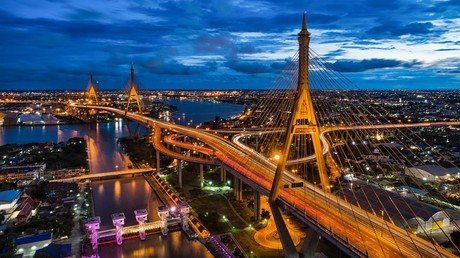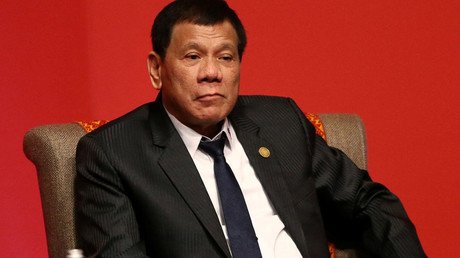US-China trade war is a ‘blessing in disguise’ for Indonesia
The trade dispute between Washington and Beijing could unlock opportunities for other players in Asia, the Indonesian minister of industry said in an interview with RT during the World Economic Forum in Davos.
“The world will be better if China and the US are more harmonious. There is also some blessing in disguise for a country like Indonesia, because of the option of economic growth looking into other regions, other than China,” Airlangga Hartarto told RT when asked about the consequences of the trade war.
The minister added that Indonesia can benefit from more investment in the country, while the whole region may even become more stable in the wake of the conflict.
Accordingly, the Asian nation’s real GDP growth has risen slightly to 5.3 percent in the first half of last year while the Sino-US dispute was building up momentum.
Indonesia wants to achieve an even more ambitious goal: to become one of the top 10 largest global economies by 2030, according to Hartarto. Moreover, it could become the fourth biggest economy by 2045, he added, citing a forecast by the UK-based PricewaterhouseCoopers consulting company.
Earlier this month, multinational bank Standard Chartered predicted that the country would break into the top five economies over the next 11 years, taking fourth place behind China, India and the US.
The US-China trade conflict started in July last year when US President Donald Trump slapped additional duties on Chinese imports, citing what he called Beijing’s unfair trade practices. After several rounds of tit-for-tat tariffs, $250 billion worth of Chinese goods were hit by the US, while China responded with tariffs on $110 billion worth of American goods, targeting politically important industries such as agriculture.
Washington was threatening to increase the tariffs on $200 billion of Chinese imports before Trump met with his Chinese counterpart Xi Jinping to pause the dispute in December.
During his address to the audience at the World Economic Forum, Chinese Vice-President Wang Qishan said the world’s two biggest economies are “mutually indispensable, so their relations must be mutually beneficial.”
“This is the reality: neither side can do without the other side,” Wang stated.
The two countries are currently in talks to avoid further trade tensions as the 90-day truce expires on March 1. The last round of negotiations took place in Beijing on January 7-9.
However, it is feared that the process could yet stall, as the Financial Times reported that Washington had turned down proposals to hold vice-ministerial talks to pave the way for the next, higher-level meeting. Beijing insists that the two sides remain in contact over trade talks, according to China’s Foreign Ministry.
For more stories on economy & finance visit RT's business section















